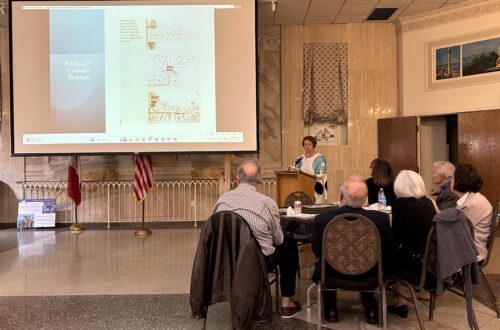
Influential Novelist and Screenwriter John Fante
By Joseph “Sonny” Scafetta, Jr.

Credit: Wikipedia
Often referred to as the quintessential L.A. novelist and a precursor to the Beat writers of the 1950s, John Fante was one of the first novelists to portray the tough times for writers during the Great Depression. John Fante also had roots in Abruzzo.
John Fante was born on April 8, 1909, in Denver, Colorado. His father Nicola had emigrated from the town of Torricella Peligna (population 1,520 in the 2008 Census) in the province of Chieti in the region of Abruzzo. His mother was Mary Capolungo, a devout Catholic whose parents had emigrated from the region of Basilicata in southern Italy. Nicola was a bricklayer and a stonemason. However, he was also an alcoholic and a gambler, so his family was often in poverty. Fante attended Catholic elementary schools. He graduated from St. Regis High School in June 1927. He enrolled in the University of Colorado, but dropped out after two years to write. Without any success in Denver, he hitchhiked in 1933 to Los Angeles to focus on his writing. There he met Joyce Smart on January 30, 1937. They were married six months later in Reno, Nevada, on July 31. They then moved to Malibu and had four children.
Soon thereafter, his short story “Altar Boy” was published in the highly regarded literary magazine The American Mercury whose editor, H. L. Mencken, helped Fante get his first novel, Wait Until Spring, Bandini, published in 1938. In the next year, his greatest novel, Ask the Dust, which was semi-autobiographical, was published. It is a story about Arturo Bandini, a struggling writer in Depression-era Los Angeles. It is considered the great Los Angeles novel. His short story collection, Dago Red, appeared in 1940. Later that year, he started writing movie scripts with his drinking buddy, William Faulkner. Fante’s next novel, Full of Life, was printed in 1952 and later made into a movie starring Richard Conte. In 1955, Fante was diagnosed with diabetes which caused him to go blind. Nevertheless, he next co-wrote the screenplay for the movie, Walk on the Wild Side, which starred Jane Fonda. His other screenplays written from 1957 to 1962 included Dinky, Jeanne Eagels, My Man and I, The Reluctant Saint, Something for a Lonely Man, and Six Loves. In 1970, he published the novel, Bravo, Burro! Next, he published the novel, The Brotherhood of the Grape, in 1977. Later that year, he had his legs below the knees amputated because of his diabetes. His last published novel while he was living was Dreams from Bunker Hill in 1982. Fante died on May 8, 1983, in Los Angeles, one month after his 74th birthday.
His short story collection, Dago Red, was re-published with more short stories as The Wine of Youth in 1985. Later that year, Fante’s unpublished novel, The Road to Los Angeles, was printed. Also, an incomplete novel was found by his wife and published as 1933 Was a Bad Year. In 1986, she found and had published a novella, West of Rome. Fante’s personal correspondence with Mencken from 1930 to 1952 was published in 1989. Also, later that year, a movie version of Wait Until Spring, Bandini was released.
On January 18, 2001, a play entitled 1933, based on Fante’s novel, premiered in the Denver Center for the Performing Arts. In March 2006, Paramount Pictures released the movie, Ask the Dust. In December of that year, a documentary film, A Sad Flower in the Sand, about Fante aired on the PBS series, Independent Lens. On April 8, 2010, his 101st birthday, a Fante Square sign was unveiled at the intersection of 5th Street and Grand Avenue in the old Bunker Hill neighborhood that he wrote about. In October 2019, a French film, Mon Chien Stupide (My Dog Stupid), was released. It was based on a story in Fante’s novella, West of Rome.Sources: (all accessed April 10, 2025)
en.wikipedia.org/wiki/John_Fante
en.wikipedia.org/wiki/Torricella_Peligna
en.wikipedia.org/wiki/Basilicata
Summer 2025





